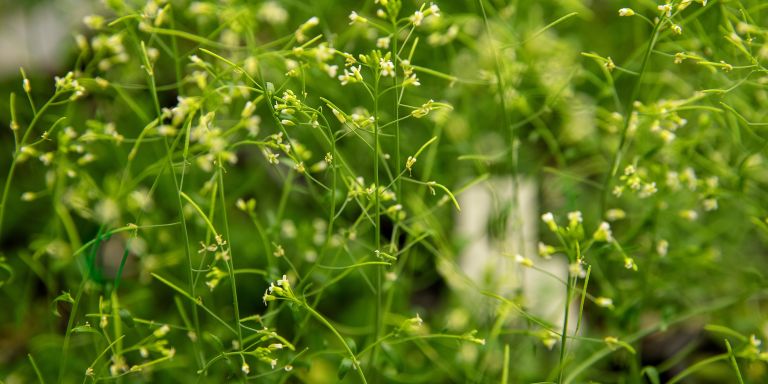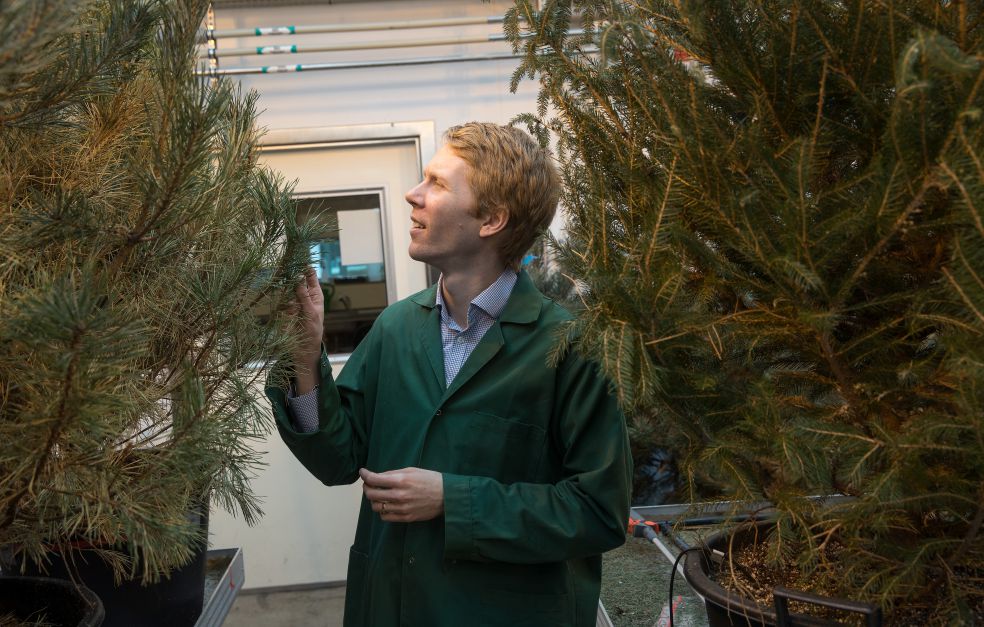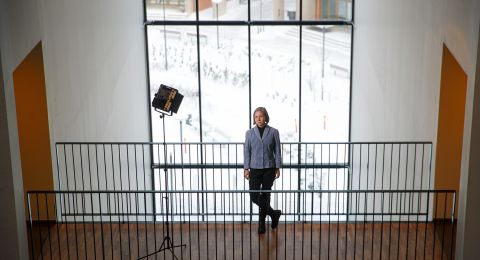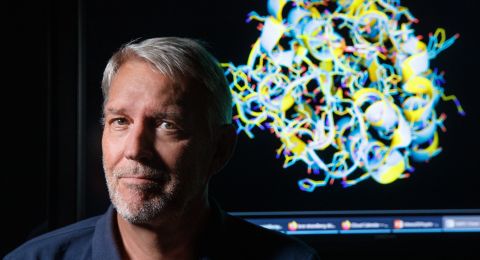Grafting is a well-known technique used in horticulture, dating back to antiquity. But successful grafting demands more than just green fingers. Wallenberg Academy Fellow Charles Melnyk intends to be the first to identify the biological mechanisms behind successful grafting – knowledge that may have a wide-ranging impact in a few years’ time, from better wine harvests to more disease-resistant conifer forests.
Charles Melnyk
Associate Professor Plant Biology
Wallenberg Academy Fellow prolongation grant 2022
Institution:
Swedish University of Agricultural Sciences
Research field:
Effects of abiotic and biotic stress on plants, in particular the biological mechanisms behind grafting and parasitic plants. A greater knowledge about the process may lead to more effective grafting and use in the control of parasitic plants.
As a child back in Ottawa, Melnyk was fascinated by horticulture and loved to explore nature and its wild plants and animals. Now he is a researcher at the Swedish University of Agricultural Sciences (SLU) and has taken up residence at the Uppsala BioCenter. He has a number of successful years behind him at the University of Cambridge in the U.K., where his ground-breaking idea of exploring the biological mechanisms behind grafting was met with a huge response.
“Grafting is actually a brilliant way of combining the best characteristics of two plants. It’s also quite unique to plants, and does not work with other organisms. You can’t take half of an animal and combine it with half of another animal to create a superior organism.”
The history of grafting began thousands of years ago. Evidence of it can be found in Roman mosaics and Greek classical texts.
“Originally it was a method of propagating popular varieties of fruit. Perhaps someone had an apple or citrus tree that bore fruit with a particular good flavor, and wanted more specimens of the plant. But people of that era were aware that they couldn’t just cut a branch from their favorite tree, stick it into the ground, and hope that a new tree would grow. Instead, they began cutting branches from trees they wanted to propagate, and grafting them onto another rootstock.
Incredible self-healing powers
Grafting techniques have been refined over the centuries, and have been used for increasingly advanced plant breeding experiments. But we still do not know what happens at the molecular level – how it is possible for one individual to be joined to another without the two rejecting each other. Instead they start a process to heal the join and form combined tissue.
“Plants have an incredible ability to heal themselves and regenerate. We are interested in the entire regeneration process, and what happens when one organism starts to influence another’s characteristics, and how they begin to communicate,” Melnyk says.
In seeking answers, Melnyk has chosen a completely new approach. Previously, researchers have mainly studied commercially important species such as grapes, tomatoes and apple trees. This project is instead focusing on an inconspicuous weed: thale cress (Arabidopsis thaliana). In plant biology, this is the equivalent of the fruit fly.
“Arabidopsis is a model plant with which we have extensive genetic resources. It is also quick and easy to graft. And we are convinced that Arabidopsis uses the same fundamental mechanisms as other plant species.”
“If I hadn’t been admitted as a Wallenberg Academy Fellow, I wouldn’t have been able to transfer my research from the U.K. to Sweden. The research environment here is excellent, as is the funding available for advanced research.”
Better wine harvests
Melnyk wants to use this weed to detect the genes and signal pathways that control the plants’ regeneration and see what happens when tissues fuse. He is also looking for molecules that can change the entire healing process. The next step will be to use that knowledge to inhibit or improve plant regeneration. This offers commercial potential; collaboration is already under way with a research center in Bordeaux, France.
“The wine industry is dependent on grafting – millions of plants are grafted every year. Given the size of the industry and the sums of money involved, it’s easy to see the economic implications of improving grafting.”
There are also applications in Sweden. Grafting is already used in Swedish forestry, and Melnyk believes that the new research findings may boost the potential of the method. Collaboration recently began with the Forestry Research Institute of Sweden in Uppsala.
“Forests – particularly conifer forests – are important for the Swedish economy. I think we can use refined grafting methods to improve tree characteristics, for example improving resistance to disease, stress tolerance and their ability to withstand cold and drought. This may increase yields and could represent a very attractive option for the forest industry.”
New strategies to control parasitic plants
Melnyk is also researching parasitic plants which cause global crop damage. He discovered interesting parallels between parasitic plants and grafted plants. A parasitic plant also fuses with the host plant by a regeneration process, connecting vascular tissue and using that connection to extract nutrients. Researchers hope that greater biological understanding will help in developing new strategies to combat harmful plants.
“There is great interest in learning how to fight parasitic plants. They constitute a huge problem, particularly in Africa and Southeast Asia.
Melnyk is looking forward to a new life in Sweden, where he and his Swedish wife have bought a house with a garden of their own.
“When I began my research at Cambridge, I was the only person working in this field, and this recognition from the Wallenberg Foundation is incredibly important. I think the Foundation understands that I took a risk when I chose a line of research that no one had tried before.”
Text Nils Johan Tjärnlund
Translation Maxwell Arding
Photo Magnus Bergström






